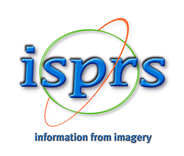|
Siberian State Academy of Geodesy The academy presents a modern holding comprising the following institutes:
Activities in photogrammetry, remote sensing and geographic information systems:
To implement such projects, the academy has ample amount of devices (up to 20 satellite receivers and electronic tacheometers), car park (6 specialized vehicles) and a lot of computers (including portable ones.). To implement complex field works, interdepartment laboratories have been set up. For chamber processing of the pictures there exist a number of specialized laboratories: digital processing of aerial photographs, computer graphics, data processing. At these laboratories there work post-graduates, doctorants, teachers and students of the academy. For many of them such work is the basis for development and introduction of R&D innovations. Annually, some 300-400 scientific articles are published based on the results of such contractual work. Fundamental and applied R&D work is performed at the departments, in specialized inter-department and department laboratories. |
|
|
